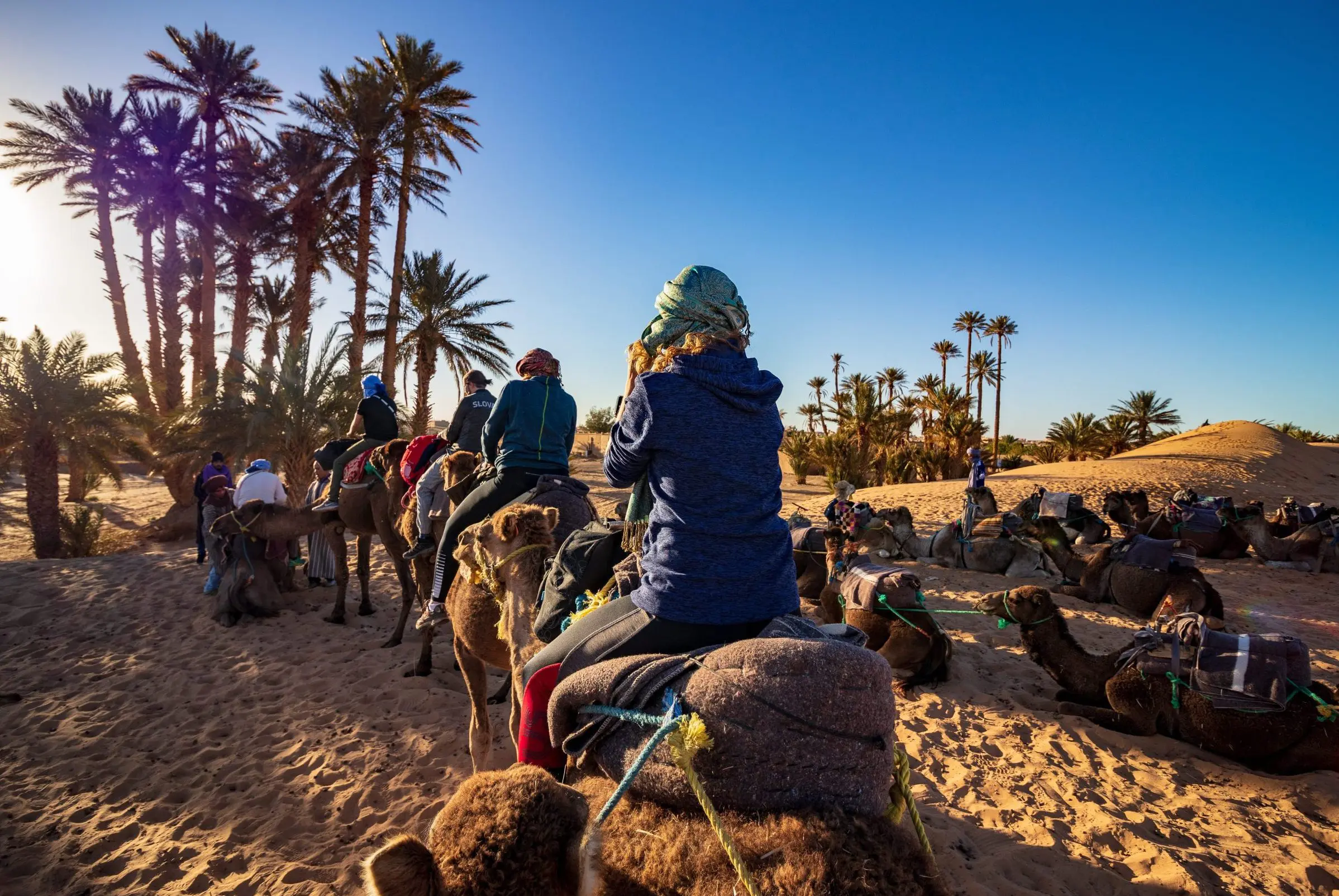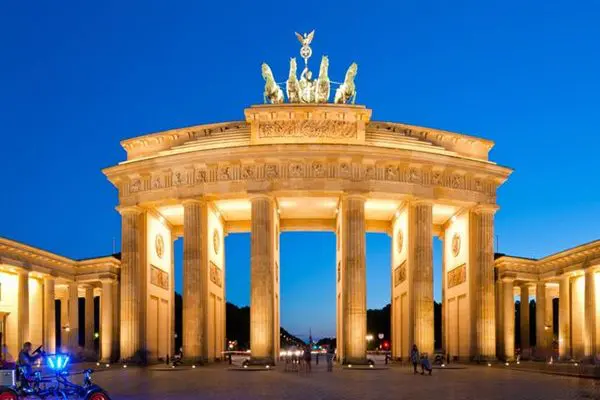
General Information About Pyramids of Giza
Before reading Facts About the Pyramids of Giza lets have a quick view about Pyramids.
The Pyramid of Giza stands as an iconic testament to ancient Egyptian ingenuity and architectural prowess, captivating the imaginations of travelers from around the globe. Recognized as one of the premier tourist destinations worldwide, the Pyramids of Giza have etched their place on countless travel bucket lists, beckoning enthusiasts and history buffs alike to witness the awe-inspiring grandeur of these ancient structures.
Recommended:
Situated in the northern expanse of Egypt, gracing the western bank of the majestic Nile River, the Pyramids of Giza encompass a total of nine pyramids. However, it is the trio of colossal pyramids on the Giza Plateau that steals the spotlight and commands attention with unparalleled majesty. As visitors embark on this historical pilgrimage, the Great Sphinx, the world’s largest monolith statue, stands as a silent guardian, adding an extra layer of mystique to the already enchanting landscape.
Facts about the Pyramid of Giza further enhance the allure of this archaeological wonder. Delving into the history and significance of these ancient structures, travelers are treated to a deeper understanding of the marvels they are about to witness. From the meticulous construction techniques that have withstood the test of time to the enigmatic purpose behind their creation, each fact adds a layer of intrigue to the journey.
Before setting foot on the hallowed grounds of the Pyramids of Giza, it’s essential to grasp these fascinating tidbits. The Pyramid of Giza, with its labyrinthine passages and chambers, beckons explorers to unravel the mysteries concealed within its massive limestone blocks. These facts serve as a prelude, heightening the anticipation and appreciation for the monumental legacy that awaits eager visitors.
How old are the pyramids of Giza?
The Pyramids of Giza were built more than 1,200 years before the rule of King Tut

One of the most important Facts About the Pyramids of Giza is its distinguished status as a UNESCO-listed World Heritage site. This remarkable distinction not only underscores its unparalleled historical significance but also positions it as the sole survivor among the original Seven Wonders of the World. Dating back to 2560 BC, the Great Pyramid holds the esteemed title of being the oldest and grandest among the nine pyramids nestled within the Giza Necropolis.
Eclipsing its counterparts in both age and magnitude, this architectural marvel serves as the eternal resting place for the illustrious King Khufu. The colossal endeavor of constructing the Great Pyramid unfolded over a span of approximately 20 years, a testament to the ancient Egyptians’ unparalleled craftsmanship and organizational prowess.
Every block meticulously laid in place contributes to the enduring legacy of this colossal structure, inviting contemporary visitors to marvel at the engineering marvel that stood the test of millennia. The journey through time, marked by the completion of the Great Pyramid, remains a captivating testament to human achievement and ingenuity.
How tall are the pyramids of Giza?
The Great Pyramid of Giza is 481 feet tall

The Great Pyramid of Giza stands as a colossal testament to ancient Egyptian architectural prowess, towering impressively at a height of 481 feet. What makes this astounding structure even more remarkable is its unparalleled historical reign as the tallest building in the world for a staggering 3,800 years. To put this into perspective, it retained its towering supremacy until the construction of the Lincoln Cathedral in England in 1311, marking the end of an unparalleled era of architectural dominance.
In juxtaposition to its towering counterpart, the Pyramids of Khafre reach a height of 448 feet, surpassing the iconic Statue of Liberty by about 100 feet. The sheer magnitude of these structures invites contemplation about the scale and ambition of ancient Egyptian construction projects.
The Pyramid of Menkaure, the third major pyramid at the Giza Necropolis, stands at a comparatively modest height of 213 feet. Interestingly, this height aligns with the soaring sails of Australia’s iconic Sydney Opera House, serving as a captivating point of reference for those seeking to visualize the scale of these ancient wonders.
Delving into these height comparisons adds a fascinating layer to the narrative of the Pyramids of Giza, emphasizing their monumental stature in the context of both ancient and modern architectural achievements. The Great Pyramid, in particular, continues to captivate with its enduring legacy as a towering symbol of human ingenuity and perseverance across the ages.
How were the Pyramids of Giza built?
The Pyramids were built by the Egyptian people themselves.

The construction of the Pyramids stands as a testament to the collective efforts of the Egyptian people, who, driven by a sense of civic duty, are believed to have undertaken this monumental task. While Egyptologists acknowledge that the precise methods of pyramid construction remain shrouded in mystery, a prevailing theory posits that the Egyptian populace, motivated by a collective commitment to service, played a pivotal role in their creation.
Historical evidence suggests that an impressive workforce, consisting of skilled masons, engineers, architects, surveyors, and various other craftsmen, numbering between 20,000 and 30,000, dedicated their expertise to the construction of the Khufu temple. Expanding the scope of this awe-inspiring endeavor, historians estimate that over 100,000 construction workers were involved in the comprehensive construction of the Pyramids of Giza.
The enormity of the undertaking becomes even more apparent when considering the sheer weight of the limestone blocks used in the construction, each weighing a staggering two tonnes. The question of how these colossal blocks were lifted and precisely arranged to form the iconic pyramids remains a perplexing aspect of Egyptology.
While the exact mechanisms remain elusive, scholars have proposed the intriguing possibility of a sophisticated ramp and pulley system, providing a potential solution to the logistical challenges faced by the ancient builders in realizing this monumental feat. The Pyramids of Giza thus stand not only as enduring marvels of architecture but also as a testament to the incredible collaborative efforts of the ancient Egyptian populace.
Are there invisible doors in the Pyramid of Giza?
The Great Pyramid used to have an invisible door which is one of the rare know and Facts About the Pyramids of Giza

The Great Pyramid was equipped with a concealed entrance in the form of an invisible swivel door, estimated to weigh nearly twenty tonnes. Intriguingly, this door possessed a unique characteristic—it could only be discerned and opened from within.
The substantial weight of the door contributed to the mystery surrounding its existence, with the opening mechanism eluding discovery until scientists meticulously examined the Great Pyramid. The astonishing aspect of this architectural marvel lies in the fact that the Egyptians ingeniously designed and operated this efficient feature, leaving modern researchers still perplexed by their remarkable engineering capabilities. The enigmatic nature of the invisible door adds an extra layer of fascination to the enduring mysteries that surround the Great Pyramid.
What are the Pyramids of Giza made out of ?
Pyramids of Giza were primarily constructed using limestone and granite.

Most Frequently Asked Questions about Great Pyramid of Giza
The Great Pyramid of Giza is located on the Giza Plateau, near Cairo, the capital city of Egypt. The Giza Plateau is situated on the west bank of the Nile River, approximately 8 kilometers (5 miles) southwest of Cairo’s city center. The Great Pyramid, also known as the Pyramid of Khufu or the Pyramid of Cheops, is part of the Giza Necropolis, which includes other notable pyramids such as the Pyramid of Khafre and the Pyramid of Menkaure. The entire Giza Plateau is a UNESCO World Heritage Site and is one of the most iconic and visited archaeological sites in the world.
Exact Location of Pyramid of Giza
There are three major pyramids at the Giza Necropolis, located on the Giza Plateau near Cairo, Egypt. These three pyramids are:
Great Pyramid of Khufu (Pyramid of Cheops): The largest and most famous pyramid at Giza. It was built for Pharaoh Khufu and is one of the Seven Wonders of the Ancient World.
Pyramid of Khafre (Pyramid of Chephren): The second-largest pyramid at Giza. It is associated with Pharaoh Khufu’s son, Pharaoh Khafre. The pyramid is easily recognizable by the casing stones that still partially cover its apex.
Pyramid of Menkaure: The smallest of the three major pyramids at Giza, built for Pharaoh Menkaure. It is distinguishable by the three smaller pyramids (pyramid complexes) that accompany it.
These three pyramids, along with the Great Sphinx and other associated structures, form the core of the Giza Necropolis, which served as a burial ground for pharaohs and high-ranking individuals during the ancient Egyptian civilization.
Climbing the Great Pyramid of Giza is not allowed for tourists. Climbing the pyramids is prohibited due to concerns about preservation, safety, and potential damage to the ancient structures. The surface of the pyramids is composed of limestone, and allowing large numbers of people to climb could cause erosion and wear on the stones.
Visitors to the Giza Plateau are generally allowed to explore the area around the pyramids, including the Sphinx and other associated structures, but climbing the pyramids themselves is strictly prohibited. There are designated areas for tourists to take photos and enjoy the views without compromising the integrity of these ancient monuments.
It’s essential to check with local authorities, tour guides, or official sources for the most up-to-date information on visiting and exploring the Giza Pyramids, as rules and regulations may evolve over time.
The Great Pyramid of Giza, also known as the Pyramid of Khufu or the Pyramid of Cheops, was constructed as a tomb for the Pharaoh Khufu (Cheops in Greek), who was the second pharaoh of the Fourth Dynasty of ancient Egypt. Khufu ruled during the 26th century BCE, and his pyramid is one of the most iconic and largest pyramids in Egypt.
The pyramids at Giza served as elaborate burial structures for the pharaohs and were intended to house the pharaoh’s body, along with various goods and items believed to be necessary for the afterlife. The Great Pyramid, in particular, was part of a complex that included other smaller pyramids for Khufu’s queens, temples, causeways, and other structures.
The burial chambers within the Great Pyramid contain the sarcophagus of Pharaoh Khufu, although the actual burial site itself is believed to be located within a central chamber. The pyramid complex is a testament to the ancient Egyptian beliefs in the afterlife and the pharaoh’s eternal journey.
 October Sale: 50% Off
October Sale: 50% Off Croatia Sailing 2025: 50% Off
Croatia Sailing 2025: 50% Off ANZAC Day Trips : Save 40%
ANZAC Day Trips : Save 40%  Central & Eastern Europe Tours: 50% Off
Central & Eastern Europe Tours: 50% Off  Why Travel Talk
Why Travel Talk Travel Talk Blog
Travel Talk Blog Responsible Travel
Responsible Travel Fair Travels with Travel Talk
Fair Travels with Travel Talk